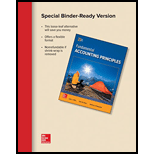
Concept explainers
Concept Introduction:
Material Cost variance: The difference between the
• Actual price of the material varies from the standard price and/or
• Actual quantity of material used varies from the standard quantity.
Therefore, Material Cost Variance is the sum of (i) Material Price Variance and (ii) Material Quantity Variance.
Material Price Variance:The difference between the actual rate of materials and the standard rate of materials used in the production is the Material Price Variance.
Material Quantity Variance:The difference between actual quantity of material used and the standard quantity of material to be used is the material quantity variance.
The following formulas are used to calculate Material cost variance:
Material Cost Variance (MCV) = Material Price Variance (MPV) + Material Quantity Variance (MQV)
Also Material Cost Variance (MCV) = Standard Cost – Actual Cost
Material Price Variance (MPV) = Standard material cost for actual quantity – Actual material cost
Material Quantity Variance (MQV) = Standard cost of standard quantity of material – Standard cost of
actual quantity of material
Material Cost Variance gives a view of deviations from the set standards which can be wither favorable or unfavorable
To determine: The actual quantity of material used in production
Want to see the full answer?
Check out a sample textbook solution
Chapter 23 Solutions
Loose Leaf for Fundamental Accounting Principles
- Please explain the solution to this general accounting problem with accurate principles.arrow_forwardPlease explain the solution to this financial accounting problem with accurate principles.arrow_forwardCan you demonstrate the accurate method for solving this General accounting question?arrow_forward
- Could you help me solve this financial accounting question using appropriate calculation techniques?arrow_forwardNeed help with accountingarrow_forwardElmont Industries issues $2,400,000 of 8% bonds at 101. What is the amount of cash Elmont would receive from the sale? A. $2,373,000 B. $2,240,000 C.$2,424,000 D. $2,185,000 E. None of the above. Help mearrow_forward
- Please explain how to solve this financial accounting question with valid financial principles.arrow_forwardCan you help me solve this general accounting problem with the correct methodology?arrow_forwardI am looking for a step-by-step explanation of this financial accounting problem with correct standards.arrow_forward

 AccountingAccountingISBN:9781337272094Author:WARREN, Carl S., Reeve, James M., Duchac, Jonathan E.Publisher:Cengage Learning,
AccountingAccountingISBN:9781337272094Author:WARREN, Carl S., Reeve, James M., Duchac, Jonathan E.Publisher:Cengage Learning, Accounting Information SystemsAccountingISBN:9781337619202Author:Hall, James A.Publisher:Cengage Learning,
Accounting Information SystemsAccountingISBN:9781337619202Author:Hall, James A.Publisher:Cengage Learning, Horngren's Cost Accounting: A Managerial Emphasis...AccountingISBN:9780134475585Author:Srikant M. Datar, Madhav V. RajanPublisher:PEARSON
Horngren's Cost Accounting: A Managerial Emphasis...AccountingISBN:9780134475585Author:Srikant M. Datar, Madhav V. RajanPublisher:PEARSON Intermediate AccountingAccountingISBN:9781259722660Author:J. David Spiceland, Mark W. Nelson, Wayne M ThomasPublisher:McGraw-Hill Education
Intermediate AccountingAccountingISBN:9781259722660Author:J. David Spiceland, Mark W. Nelson, Wayne M ThomasPublisher:McGraw-Hill Education Financial and Managerial AccountingAccountingISBN:9781259726705Author:John J Wild, Ken W. Shaw, Barbara Chiappetta Fundamental Accounting PrinciplesPublisher:McGraw-Hill Education
Financial and Managerial AccountingAccountingISBN:9781259726705Author:John J Wild, Ken W. Shaw, Barbara Chiappetta Fundamental Accounting PrinciplesPublisher:McGraw-Hill Education





